Tamron 14-150mm f/3.5-5.8 Di III Review

Introduction
The Tamron 14-150mm f/3.5-5.8 Di III is a wide-angle to telephoto super-zoom lens designed for Micro Four Thirds compact system cameras. Boasting a 10.7x zoom range, compact and lightweight design, a 52mm filter thread and a metal lens barrel exterior, the Tamron 14-150mm f/3.5-5.8 Di III costs around £389 / $589 and is available in silver or black.
Ease of Use
The Tamron 14-150mm f/3.5-5.8 Di III is quite light considering the 10.7x zoom range on offer, weighing in at 285g. It certainly doesn't feel too weighty in the hand and proved to be well balanced on the Panasonic Lumix DMC-GX7 that we tested it with. The lens does extend by about an extra 4cm when fully zoomed out to 150mm, where it starts to look a little incongruous.
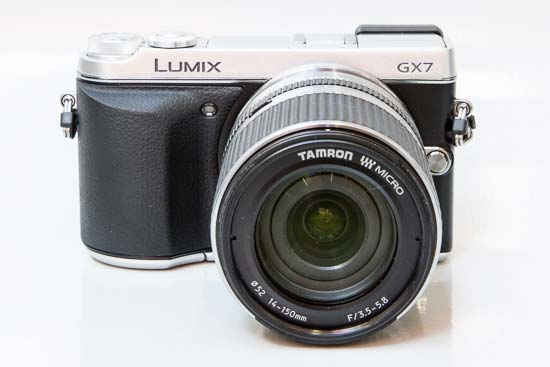 The Tamron 14-150mm f/3.5-5.8 Di III lens attached to the Panasonic Lumix DMC-GX7
The Tamron 14-150mm f/3.5-5.8 Di III lens attached to the Panasonic Lumix DMC-GX7
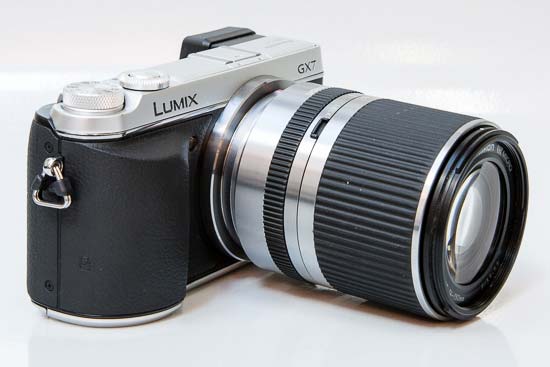 The Tamron 14-150mm f/3.5-5.8 Di III lens at 14mm
The Tamron 14-150mm f/3.5-5.8 Di III lens at 14mm
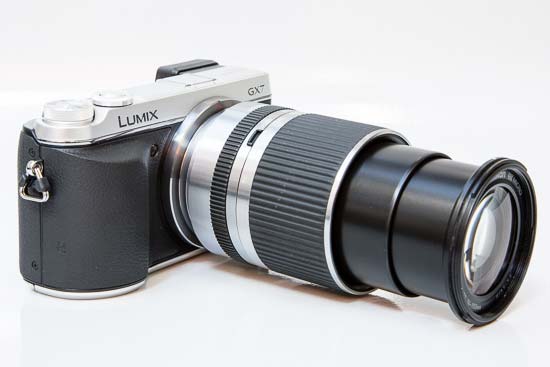 The Tamron 14-150mm f/3.5-5.8 Di III lens at 150mm
The Tamron 14-150mm f/3.5-5.8 Di III lens at 150mm
 The Tamron 14-150mm f/3.5-5.8 Di III lens at 14mm
The Tamron 14-150mm f/3.5-5.8 Di III lens at 14mm
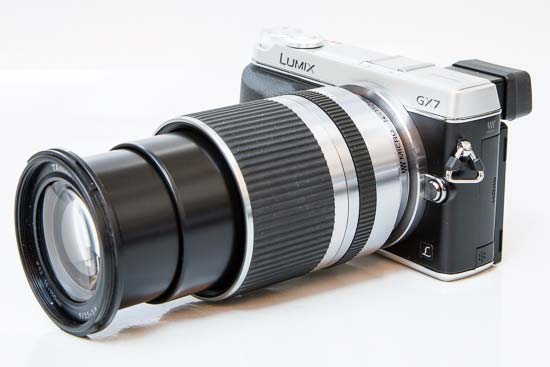 The Tamron 14-150mm f/3.5-5.8 Di III lens at 150mm
The Tamron 14-150mm f/3.5-5.8 Di III lens at 150mm
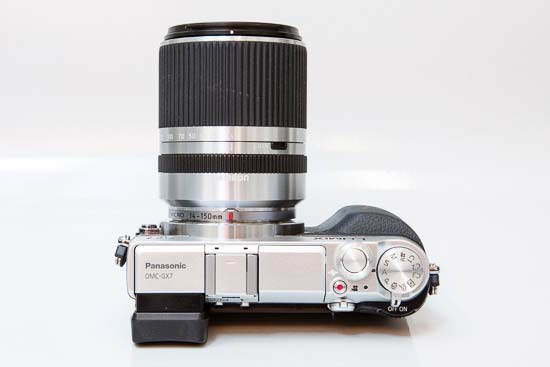 The top of the Tamron 14-150mm f/3.5-5.8 Di III lens
The top of the Tamron 14-150mm f/3.5-5.8 Di III lens
The rear element is surrounded by a metal lens mount and hides 17 elements in 13 groups, including one LD (Low Dispersion) glass element, two AD (Anomalous Dispersion) glass elements, two Molded-Glass Aspherical elements and one Hybrid Aspherical element. That's a lot of glass for the light to go through and is under continuous threat of dispersion. There are seven aperture blades for the aperture range which reaches a minimum of f/22. There's no distance scale or depth of field scale.
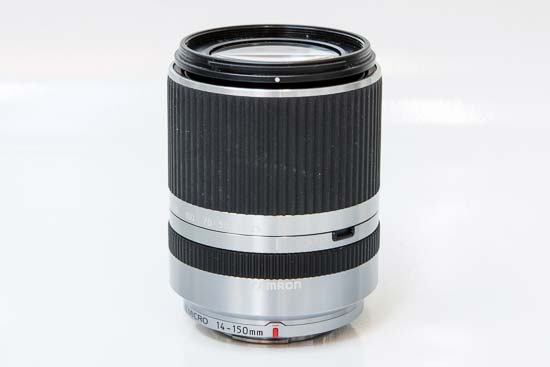 The Tamron 14-150mm f/3.5-5.8 Di III lens at 14mm
The Tamron 14-150mm f/3.5-5.8 Di III lens at 14mm
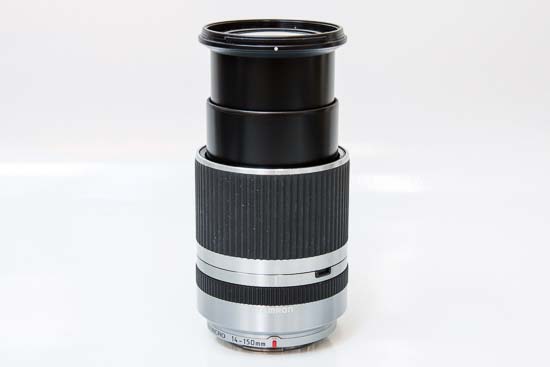 The Tamron 14-150mm f/3.5-5.8 Di III lens zoomed out to 150mm
The Tamron 14-150mm f/3.5-5.8 Di III lens zoomed out to 150mm
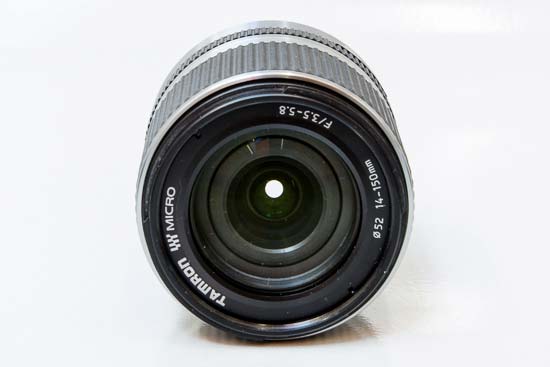 The front of the Tamron 14-150mm f/3.5-5.8 Di III lens
The front of the Tamron 14-150mm f/3.5-5.8 Di III lens
 The rear of the Tamron 14-150mm f/3.5-5.8 Di III lens
The rear of the Tamron 14-150mm f/3.5-5.8 Di III lens
There's just one switch located on the Tamron 14-150mm f/3.5-5.8 Di III lens, a simple lock to keep the lens at 14mm by placing the switch into a carved divot in the barrel. There's no switch to toggle between the AF/MF focusing mode, and there's no Vibration Compensation available either.
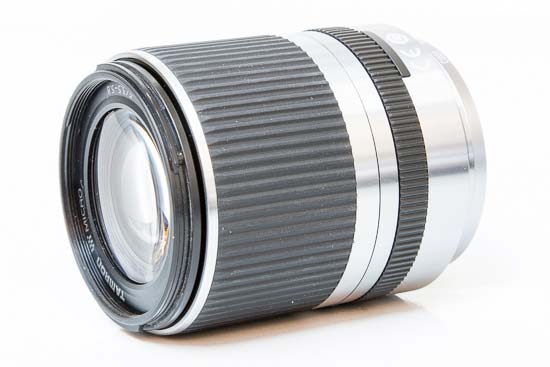 The front of the Tamron 14-150mm f/3.5-5.8 Di III lens
The front of the Tamron 14-150mm f/3.5-5.8 Di III lens
 The rear of the Tamron 14-150mm f/3.5-5.8 Di III lens
The rear of the Tamron 14-150mm f/3.5-5.8 Di III lens
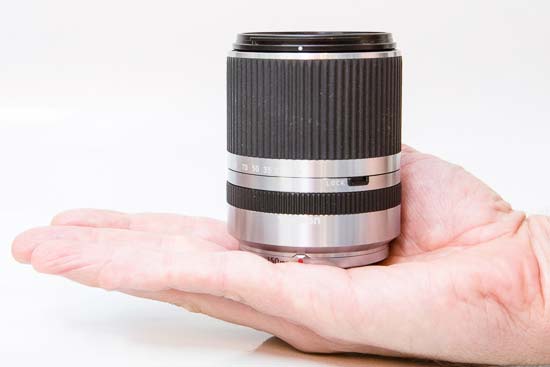 The Tamron 14-150mm f/3.5-5.8 Di III lens in-hand
The Tamron 14-150mm f/3.5-5.8 Di III lens in-hand
The Tamron 14-150mm f/3.5-5.8 Di III features a form of stepping motor which provided almost silent, quick and generally accurate auto-focusing on the Panasonic GX7 that we tested it with. The manual focusing ring is a little slim, though, and has no hard stops at either end.
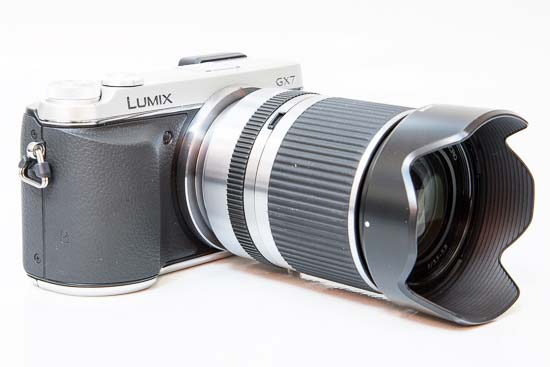 The Tamron 14-150mm f/3.5-5.8 Di III lens with the supplied lens hood fitted
The Tamron 14-150mm f/3.5-5.8 Di III lens with the supplied lens hood fitted
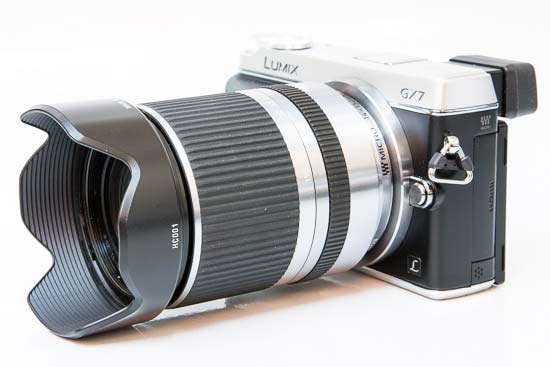 The Tamron 14-150mm f/3.5-5.8 Di III lens with the supplied lens hood fitted
The Tamron 14-150mm f/3.5-5.8 Di III lens with the supplied lens hood fitted
The lens is supplied with lens caps and a small petal-shaped lens hood - there's no bag included. The filter size is 52mm.
Focal Range
The focal range of the Tamron 14-150mm f/3.5-5.8 Di III is extremely broad. It's possible to encompass a large amount of photographic styles when using a lens such as this.
At 14mm, the field of view is 75°22'.
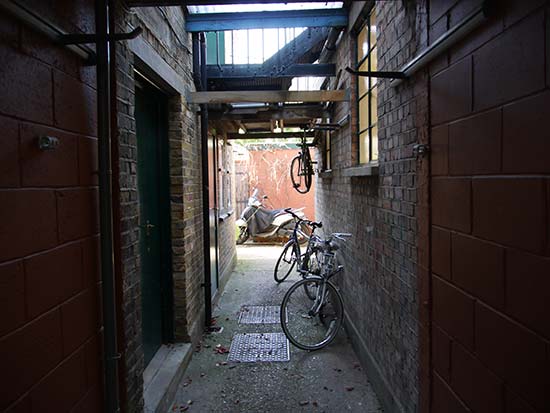 Field of view at 14mm
Field of view at 14mm
At the 150mm end, the field of view is 8°15'.
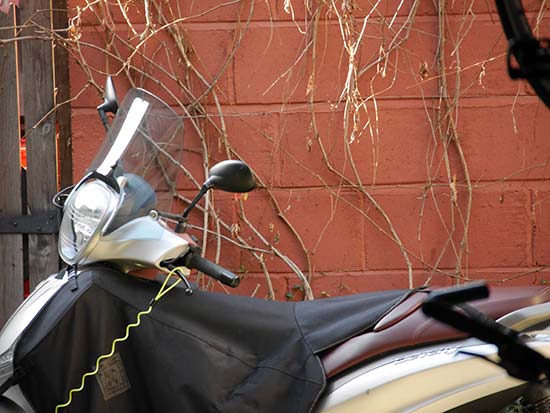 Field of view at 150mm
Field of view at 150mm
Chromatic Aberrations
The Tamron 14-150mm f/3.5-5.8 Di III does suffer from chromatic aberrations, more so at the edges of the frame when shooting wide-angle.
 |
 |
Vignetting and Distortion
With the Tamron 14-150mm f/3.5-5.8 Di III wide open, you can see some noticeable light fall-off in the corners throughout the zoom range. Stopping down helps, although to completely get rid of this phenomenon, you will need to use an f-stop of f/8 or smaller. There's also some barrel distortion at the 14mm setting.
 Vignetting at 14mm
Vignetting at 14mm
 Vignetting at 150mm
Vignetting at 150mm
Macro
The Tamron 14-150mm f/3.5-5.8 Di III has a closest focusing distance of 50cm and a maximum magnification ratio of 1:3.8 at the 150mm focal length.
 Close-up performance
Close-up performance
Bokeh
Bokeh is a word used for the out-of-focus areas of a photograph, and is usually described in qualitative terms, such as smooth / creamy / harsh etc. In the AF 28-300mm f/3.5-6.3 Di VC PZD lens, Tamron have employed an iris diaphragm with seven rounded blades, which has resulted in nice bokeh in our view. We do realise, however, that bokeh evaluation is subjective, so we've included some 100% crops for your perusal.
 |
 |
 |
 |
Sharpness
In order to show you how sharp this lens is, we are providing 100% crops on the following pages.
